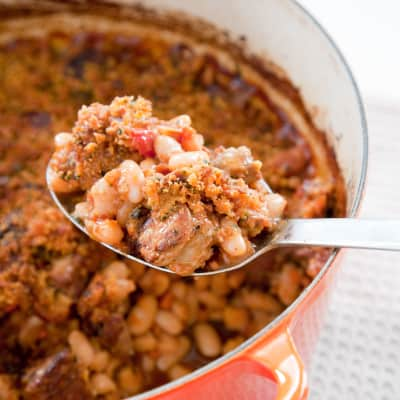Soaking dried beans in water overnight helps speed up their cooking. Some sources recommend cooking the beans directly in the soaking liquid in order to retain any flavorful water-soluble compounds and colorful pigments that may leach out during the soak. We thought it was worth investigating.
Experiment
We always brine our beans to soften their skins, which helps them cook more evenly and reduces the number of ruptured beans. Once the beans are brined, we usually cook them in fresh, lightly salted water.
Since our standard brine formula would be too salty to cook the beans in, we used a reduced-salt brine to soak black, pinto, and red kidney beans and then cooked half of each batch in its brine and the other half the usual way in fresh, lightly salted water.
Results
The beans cooked in their soaking liquid were a little darker and more vibrant in color but not significantly so. More important, we didn’t find differences in taste among any of the beans.
Takeaway
The bottom line? There’s no flavor advantage to cooking dried beans in their soaking liquid and only a minor color advantage. We’ll stick to our tried-and-true bean-brining formula and always cook in fresh water (or whatever liquid the recipe calls for).
Our Favorite Recipes Using Dried Beans

Black Bean Soup
We wanted a soup that had a strong flavor; a rich, dark broth; and perfectly cooked beans.
Get the Recipe
Greek-Style Bean Soup
Desert tepary beans fill in for lentils in this comforting vegan soup.
Get the Recipe

French Pork and White Bean Casserole (Cassoulet)
In France, this 700-year-old pork-and-bean casserole is a three-day production. Could we turn it into an afternoon’s work?
Get the Recipe
